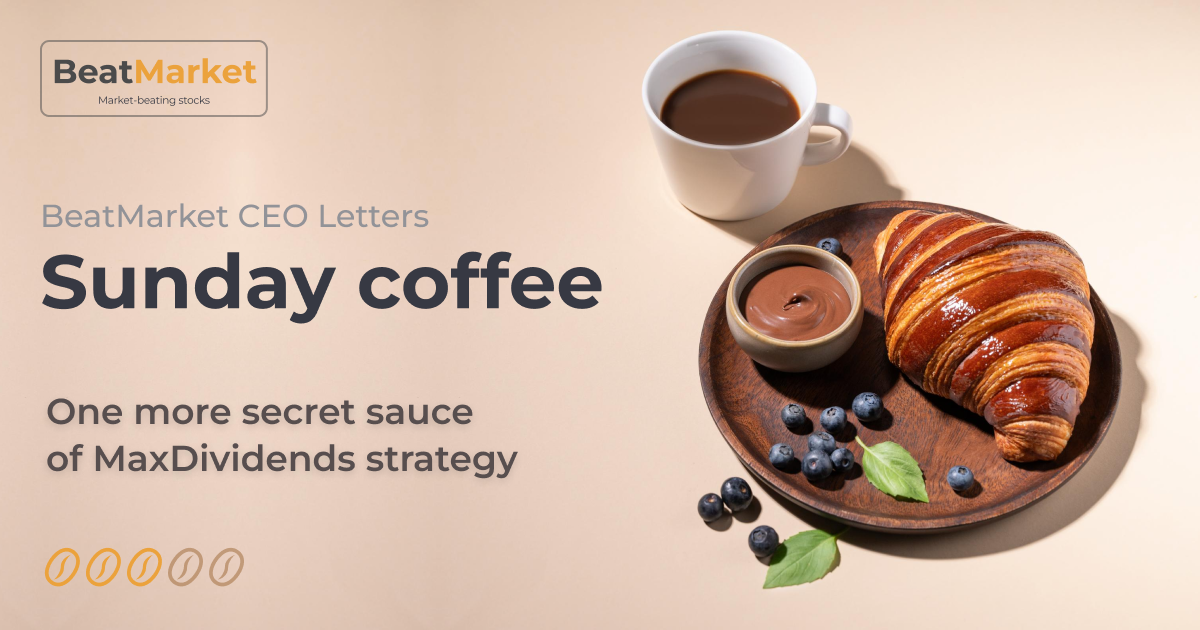One of the key factors affecting the final investment return is the taxation of the income received. Qualified dividends result in a much lower tax liability vs ordinary dividends. We will tell you about the types of company distributions considered to be qualified and provide a detailed explanation of their advantages.
Table of Contents
What Is a Qualified Dividend?
Dividends are payments paid out of a company’s net profits to its shareholders. Tax must be paid on this money. They are the payments considered by the IRS to be capital gains rather than ordinary income. This makes the tax withheld at a reduced rate.
All of the following conditions must be met for a dividend to be considered a qualified dividend:
- Dividends are paid by a U.S. company or a qualified foreign corporation. This is usually a company whose stock is traded on a U.S. exchange or a company located in a country with a U.S. tax treaty.
- The common stock was purchased at least 60 days before the ex dividend date. At that point, a period of 121 days begins to run, during which the investor must hold the securities for a minimum of 61 days. For preferred stocks, these periods are doubled.
- The stock has not been hedged.
- The assets were not purchased through traditional 401(k) or IRA plans.
An additional issue regarding the stock withholding periods relates to distributions from mutual funds. Such dividends can also be recognised as qualified. But this requires that:
- the investor held the mutual fund’s securities for the required period of time;
- The fund itself held the company’s stock, the dividends of which are redistributed to its shareholders, for a sufficiently long period of time and did not hedge the position.
Qualified cannot be considered special dividends or dividends received on money market accounts. There will be no tax reduction when stock is acquired under an employee stock option plan.
In addition, dividends will not be recognised as qualified ones in case they are received:
- from REITs;
- MLPs;
- tax free corporations.
Dividend payments on stocks held in traditional retirement account options are not taxable in the year of receipt. But tax will be withheld at ordinary income tax rates when the money is withdrawn.
Example
Let’s take Company N as an example, a company that has set an ex dividend date of 19 December. In this case, in order to receive a qualifying dividend, its stock must be purchased no later than 18 October, given that the day of acquisition of the asset is disregarded.
When an investor, who is subject to a long-term capital gains tax rate of 0%, buys the stock before the required date, no tax will be paid.
Where to Find Qualified Dividends
The broker reports information about qualified dividends received by the investor in Section 1b of Form 1099-DIV.
Qualified Dividend Tax Treatment
Qualified dividends tax is calculated at the same rates as long-term capital gains tax. The individual rate for each investor depends on the total income and the filing status. For 2023, the rates shown in the table below are in force.
| Status/Rate | 0% | 15% | 20% |
| Single person | Up to $44,625 | $44,626 – $492,300 | From $459,750 |
| Spouses filing together | Up to $89,250 | $89,251 – $553,850 | From $517,200 |
| Married person filing separately | Up to $44,625 | $44,626 – $276,900 | From $258,600 |
| Head of household | Up to $59,750 | $59,751 – $523,050 | From $488,500 |
In addition to federal capital gains tax, a 3.8% net investment income tax may be withheld from qualified dividends.
This additional tax arises when the investor’s modified adjusted gross income exceeds:
- $200k for a bachelor;
- $250,000 for a married couple;
- $125,000 when married but filing separately.
What is an Ordinary Dividend?
Ordinary dividends are standard rate taxable distributions received by shareholders of a company’s ordinary stock. By default, all dividends are considered ordinary dividends.
When the conditions for dividends to be treated as qualified are met, this is specified separately. When this does not happen, such payments are referred to as non-qualified. They are included in the total amount of ordinary taxable income. When they exceed $1500, they must be reported on Schedule B of the 1040 form.
Example
Go back to the example of Company N with an ex dividend date of 19 December. When an investor buys its stock later than 18 October, they will have to pay federal income tax on the dividends received at rates ranging from 10% to 37%.
For example, based on his income and registration status, a person falls into the 12% marginal rate category and the payment was $1,000. In this case, they would owe a dividend tax of $120 and their net income would only be $880.
What is the difference in taxation?
The key difference comes down to the rate at which tax will be withheld. The maximum rate at which qualified dividends are taxed is 20%. For ordinary dividends, it reaches 37%. Because of this, ordinary dividends yield lower net income vs qualified dividends.
For someone with low total income (less than $44,625 for a single person), qualified dividends are completely tax free as they are subject to a 0% rate. And you’ll have to pay between 10% and 22% on ordinary dividends.
When it comes to a high-income earner, whether the dividend is ordinary or qualified, they will have to pay an additional 3.8% tax. However, they will also benefit in the amount of ordinary tax – 15% or 20% versus 35% or 37%.
Why Are Qualified Dividends Taxed More Favorably Than Ordinary Dividends?
The main purpose of introducing a favorable tax treatment is to encourage long-term investment. Tax rate reduction on dividends paid when holding stocks for a long time will be favorable to a person regardless of their financial situation.
Are qualified dividends included in ordinary dividends
Yes. The ordinary dividends an investor sees in Section 1a of Form 1099-DIV include amounts that fall into the qualified category.
To find the amount of nonqualified dividends on which tax is required to be paid at the ordinary income tax rate, subtract the number shown in 1b from section 1a.
Qualified vs. Ordinary Dividends Comparative Table
To conclude the comparative review of ordinary dividends versus qualified, let us summarize the main differences between the two in a comparative table.
| Comparison parameter | Ordinary dividends | Qualified dividends |
| Criteria for categorizing payments | No | Requirements are established for holding periods of stock, payer status, etc. |
| Tax rates | 10% to 37% (up to 40.8% including tax on net investment income) | 0% to 20% (up to 23.8% including tax on net investment income) |
| Advantages | No time limits on holding stocks, which means more flexible strategies can be used | Possibility to reduce tax by up to 0% |
| Disadvantages | Higher tax reduces net income | There are restrictions on how long stock may be held.Does not apply to all dividend payers.Does not apply to 401(k) and IRA accounts |
The tax advantages of qualified are definitely worth holding the stock long enough. Are most dividends qualified or ordinary dividends depending on the strategy.
An investor taking a buy-and-hold approach will receive predominantly qualified dividends. And someone actively speculating or buying stocks after the dividend has been declared just to receive a one-off payment will have to calculate tax mainly at ordinary income rates.
People who invest for passive dividend income need to look at whether the chosen company meets the criteria under which distributions from it can be treated as qualifying. The main exception to keep in mind is REITs. While their stocks are often added to a dividend strategy, there will be no tax reduction on them.
FAQ
What are tax-free dividends?
These are mutual fund dividends whose net assets consist of municipal bonds or other tax-free securities.
How do i know if my dividends are qualified or ordinary
Information about qualified and ordinary dividends is provided to the investor on Form 1099-DIV in sections 1a and 1b. This document is sent by banks and brokers to their customers who received distributions in excess of $10 during the year.
How do you avoid tax on qualified dividends?
To avoid paying qualified dividend tax, you must fall into the category of investors with a 0% rate. For a single person, this means income of less than $44,625, and for a married couple, less than $89,250.
Another way to avoid dividend tax is to use tax-advantaged investment accounts. These can be a Roth 401 (k), Roth IRA or 529 plan.
What makes a dividend non qualified?
Dividends will not be recognised as qualified when:
- the investor did not hold the stock for the required period of time;
- the funds came from REITs or other non-compliant payers;
- the investor held the stock for the required time but hedged his position.
Also, tax will not be reduced even if those factors are not present when the investor uses another benefit – the tax deferral that traditional retirement plans provide.
What is the difference between qualified and ordinary dividends on a 1099?
They are reported in different columns of the form. Ordinary dividends (including qualified ones) can be found in section 1a. Qualified only can be found in section 1b.







